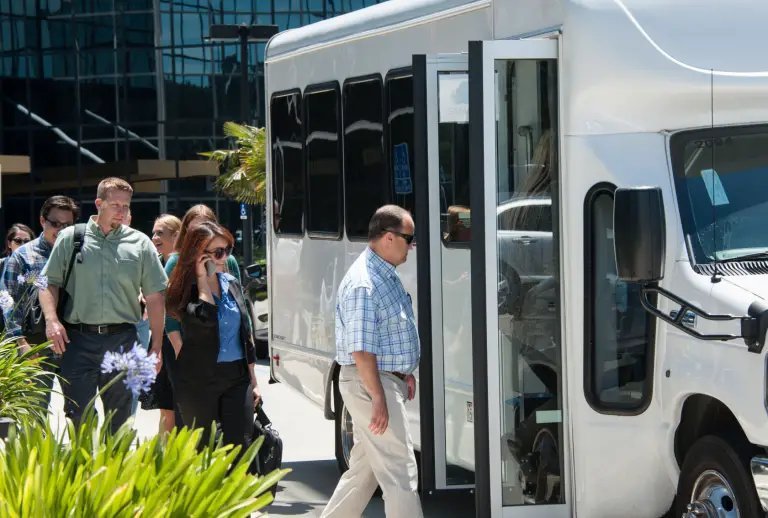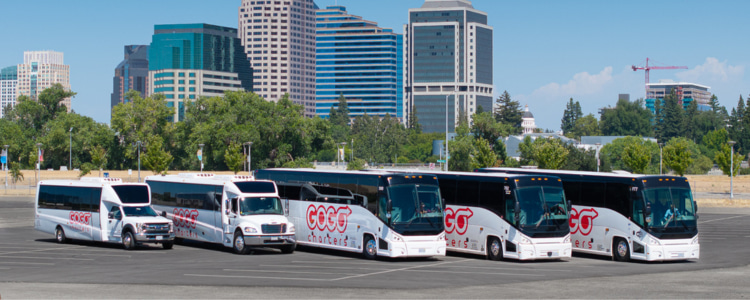20 Great Reasons For Deciding On Event Transportation Websites
20 Great Reasons For Deciding On Event Transportation Websites
Blog Article
Employee Shuttle Transportation Tips For Budgeting And Costing
Here are 10 suggestions on budgeting and cost for employee shuttle transportation:
1. Perform a thorough Cost Analysis
Perform a thorough cost analysis of the whole shuttle operation. It should include direct costs such as vehicle purchase, leasing, or rental costs, along with operational expenses like maintenance, fuel and insurance, as well as the salaries for drivers. Understanding all costs will give you a better understanding of the budget required for a successful shuttle service.
2. Establish Clear Budget Goals
Establish budget goals built on a cost analysis. Calculate how much you are willing to pay for shuttle service, and identify key performance indicators (KPIs), to measure the results. These KPIs could be the level of satisfaction of employees, utilization rates and overall efficiency. Specific goals can help guide the allocation of resources and spending.
3. Explore options for funding
Explore sources of funding for your shuttle service. This could include corporate grants, funds, or partnerships with local transportation authorities which might provide financial support or other resources. Understanding the funding options can aid in easing financial burdens and allow for better services.
4. Choose the most efficient vehicles.
When selecting the vehicles to be used for the shuttle, consider the cost-effectiveness of each option and how they balance the initial price with future operational costs. Be aware of factors like the efficiency of fuel, maintenance requirements, and vehicle reliability. Consider purchasing used vehicles that are in good condition or leasing instead of purchasing could help manage upfront costs.
5. Implementing a Dynamic Price Model
Consider a dynamic model of the cost of shuttle service. It is possible to charge a small cost to use the shuttle. This would help offset the cost. A tiered pricing structure based on usage could attract more employees and contribute to the budget.
6. Use technology to reduce expenses
Technology can be utilized to cut costs and improve efficiency. Fleet management software allows you to track fuel consumption, monitor vehicle maintenance schedules and improve routes. GPS tracking can help improve scheduling and cut down on idle time. This will lower costs for fuel. Although investing in technology can be expensive, it will pay off over time.
7. Monitor and Control Operational Costs
Examine your operational expenses regularly in order to identify areas which can be cut. Keep track of fuel consumption along with maintenance costs and driver overtime. Implementing strict fuel management practices including encouraging eco-friendly driving habits, can also lead to savings. Conduct monthly or quarterly reviews to ensure your shuttle service remains within budget.
8. Encourage employees to participate in cost-saving initiatives
Encourage employees to take part on cost-savings initiatives that are connected to shuttle service. This could include promoting the practice of carpooling among employees, or rewarding those who take the shuttle regularly. Engaging employees in the process fosters ownership and could increase the number of trips.
9. Plan contingencies for the future
Make sure you have a contingency reserve included in your budget for unexpected expenses. There are unexpected expenses that shuttles could face, like repairs in emergency situations or fluctuations in fuel prices. Set aside a small portion of your budget to pay for the possibility of unexpected expenses. This can ensure the smooth operation of the shuttle service.
10. Make sure you regularly review and adjust your Budget
Final, make adjustments and analyze the budget according to the actual results. Get feedback from employees on their experience and satisfaction with the shuttle service. Regularly assessed assessments can help you identify trends in transportation requirements and allow for timely adjustments to the budget to maximize the allocation of resources.
Applying these suggestions can help you manage your expenses and budget for shuttles to employees, eventually increasing the efficiency and satisfaction of the service. See the most popular employee shuttle tips for website examples including san airport shuttle, airporter bus, private transportation from atlanta airport, transportation for airport, shuttle service from the airport, sfo airport shuttle, airport pickup, airport rides near me, airport transportation near me, airport transportation near me and more.
Top 10 Tips To Help You Select The Best Vehicle For Your Event's Transportation Service.
Here are 10 tips about the capacity and the vehicle options for a corporate transportation service.
1. Evaluate Event Attendance Estimates
Start by estimating the amount of guests attending the corporate event. Information about registration, RSVPs, and historical attendance records can all be used to estimate the number of attendees. Knowing the anticipated number of participants could assist in determining the amount of space needed for transportation and car options.
2. The Right Vehicle Types
The type of vehicle you select will depend on the planned attendance and event nature. For larger groups, think about using buses or shuttles which can hold multiple passengers. Vans and luxury sedans are best suited to smaller groups as well as VIPs. Offering a variety of vehicles ensures all attendees will be comfortably transported.
3. Be aware of accessibility needs
Make sure that the vehicle you choose are accessible to everyone regardless of disabilities. This could mean selecting a vehicle equipped with wheelchair-lifts or low entry options. Inclusion in the transportation choices does not only meet legal standards but also enhances the overall experience for everyone involved.
4. Make sure you have multiple pick-up locations.
To facilitate transportation Consider multiple pick-up locations if your attendees come from various locations. These could be central points like hotels, airports, or even public transit hubs. It is possible to reduce logistical challenges and improve attendance by accommodating different pickup locations.
5. Booking System Implementation
Think about implementing a reservation program to book transportation. This will allow attendees to pre-book their seats, minimizing the likelihood of overcrowding, and ensuring that the vehicles are filled adequately. A reservation can also help to adjust capacity in accordance to the actual demand.
6. Use Routes that are Efficient
Plan the best routes to get to and from the event in time. Examine the patterns of traffic and bottlenecks to determine the best routes for the vehicles. The use of software for route optimization will aid you in identifying the best routes to speed up travel.
7. We offer On-Demand Shuttle Service
Consider offering shuttle services in the event of a large number of attendees. This allows attendees to arrange transport at their leisure. This is useful for events that span multiple days, or when times of the event change. On-demand service allows for greater flexibility and make sure that attendees have transportation when they need.
8. Monitor the utilization of vehicle capacity
Keep track of how many vehicles are utilized during the event. By observing the number of seats that have been filled, it is possible to make quick changes. Analyzing data on capacity post-event is also useful in the future planning of transportation.
9. Communicate Transportation Details Clearly
Be sure to communicate clearly the details of transportation before the event. Information about vehicle types as well as pickup locations and schedules must be made available. Multiple communication channels like emails, mobile apps for special events or printed material will ensure that all attendees know their options.
10. Get feedback on future Improvements
When the event is finished After the event is over, you can gather feedback on attendees' experiences regarding transportation. This could be about the comfort of their vehicle, punctuality, and general satisfaction. The feedback gathered will assist to identify what worked and what can be improved upon in future corporate events.
By following these guidelines, companies can effectively manage their capacity and choose the right vehicles for corporate event services. They also will ensure that all attendees are provided with a positive smooth experience. The planning and execution of an event is crucial to the success of an event. They also create a positive image of your business. Follow the top rated find out more on event transportation for site tips including global logistics company, safe transportation, transport mgmt, group transport, company transport, logistics near me, transportation industry, coach transportation, global logistics co, transporters near me and more.